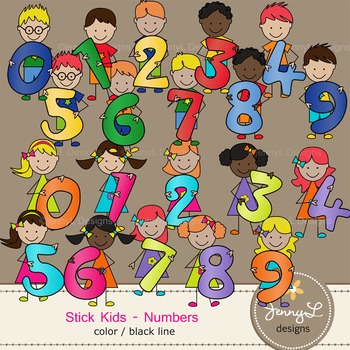 http://lessonswithlaughter.com/when-you-enter-this-classroom-door-decor/
http://lessonswithlaughter.com/when-you-enter-this-classroom-door-decor/I love how this door is decorated to remind the students each time they enter of everything they are capable of doing and becoming. I want my classroom to be like this to inspire my students to try and do their best, and to help them feel comfortable in my class. I still really like this poster and I would not change it, but I need to make sure to help my students understand the challenges they will face in reaching their goals. I want to inspire them to be what they want to be, but be realistic at the same time.


http://simplysecondgrade.blogspot.com/search/label/water%20cycle https://www.amazon.com/Spanish-Language-School-Poster-Classroom/dp/B00KSIIG5K
I want my classroom to have posters like this so that kids will learn different things wtihout even realizing it, like this water cycle poster. I like how visual it is, so the kids can see exactly how it works. Something I could change in this poster would be having the words in multiple languages, so any bilingual students I have will understand what it says.


http://mrsosterman.blogspot.ca/ https://www.amazon.com/Spanish-Language-School-Poster-Classroom/dp/B00LEU07KI
I remember having boards like this in my elementary school classroom, and I want to have one in my future classroom where the kids can learn about the days of the week, months of the year, date, numbers, weather, and more. It makes it fun and interactive, because the students can move things around and learn hands-on. This is another thing that I could change to be inclusive to bilingual students. I should include the numbers, days, and months of the year in other languages, especially Spanish, to help all students feel included and feel like they can participate in the classroom and understand what's going on. Also, I want to make sure that nothing is too high up in case I have students in wheelchairs. They should be able to reach the different things so they can also participate in every aspect of class.


http://www.teachercreated.com/decorative/paper-lanterns https://www.teacherspayteachers.com/Browse/Search:stick%20kids%20decor
I want to decorate my future classroom with cute things, like this very hungry caterpillar, that are from children's books. I think it would motivate them to read more and to use their imaginations and be creative. Something I would want to make sure to do with this is include diverse characters in my classroom decor. I will not include only characters that are familiar to children like me and my family, but I will seek out children's books with diversity and incorporate those characters in my classroom. I will also read all of those books so that all my students know who they are and do not feel left out or behind because they have never read "The Very Hungry Caterpillar." I want all of the decorations in my classroom to be inclusive.
http://sharingkindergarten.com/new-year-new-ideas/ http://yorktown.dailyvoice.com/schools/crompond-elementary-school-classroom-offers-flexible-seating/728024/
I like how this classroom is set up with small groups of students at round tables, so they can work together and make friends. I want my classroom to be neat and organized, but also feel comfortable and happy for the students. I would change this setup to have more variety of seating. If students want to sit on the floor or on exercise balls or stand, they should be able to. Also, I want to make sure that there is space in my classroom for wheelchairs and that everything is easily accessible. Students should have some say in their groups, like if I have students who do not speak English very well, I will ask them if they want to sit with other children that speak their language or if they would rather be spread out in order to be exposed to more English. I want my students to feel comfortable where they are sitting, and I want the students to be integrated and sit with students who are different from them so they can learn about other cultures and ideas.
2. My future classroom is well-organized and clean, and the students sit in small groups of about 5 or 6 at circular tables. The room is colorful, but not too filled with decorations. There are posters on the wall that help kids learn, and there is a board with a calendar, the alphabet, the numbers 0 through 10, and more. There are many books, and the students can read them if they finish their work early or if there is a break. There are also art supplies, which we will use to help the kids learn certain things, such as the water cycle. There are different manipulatives, like blocks, which we will use for learning math. I think these things are good, but I would add that the posters would be diverse, and would depict students with disabilities and students of other races. There could also be black students in wheelchairs; it shouldn't be just the token kid in a wheelchair and the token black kid, it should be a variety and make every student feel like they belong. Also, I want things to be labeled in different languages, depending on where the students are from. My classroom library will include books about all kinds of families and people; families with gay parents, biracial families, families from other countries; I also want some books in other languages. Even if I don't have students whose families look like these, I will still read these books in my classroom so my students are aware of, are respectful of, and can celebrate differences.
3. The students in my classroom come from all different backgrounds, and each table has diverse students, so they will not be prejudiced or stereotype others. There are black, Hispanic, Asian, and white students all learning together. They love to learn, do art, sing, play, and read, all of which will be incorporated in our lessons. This keeps them interested and willing to listen and participate. I did not consider before the economic status of the students, but there will likely be some students who are well-off and some who live in poverty. There may be students in my classroom who are learning English as a second language. There may be students who identify as LGBT or who have family members that do. I will do my best to get to know each student and their situation so I can help them and give them the attention they need. I will also pay attention to their learning styles and whether or not they feel comfortable doing things like reading aloud in front of the class, and I will accommodate those needs.
4. My class rules are to listen when the teacher is talking, to be respectful of others, to raise your hand when you want to say something, and to follow instructions. I will have a board with a green light, a yellow light, and a red light, and all the students' names will be on it with magnets. If they don't follow the rules, their name will get moved down to the yellow (warning zone), and if they disobey again, it will go to the red and I will contact their parents. Homework needs to be turned in on time, but if they turn it in late I will accept it for 10% less each day it is late. Thinking about it, some parents may have a lot more things to worry about than if their child's name is "in the red zone," so I think that I will just have the discipline in the classroom or if misbehavior becomes a big problem in the principal's office. Also, I have thought a lot about students' home situations; students might turn work in late because they are forgetful or irresponsible, but it may be because they were taking care of their siblings all night while their parents were at work or because the electricity in their house got shut off. I want to be aware of these things and be more lenient with homework assignments if necessary.
5. Something I will be teaching is math. I will teach lessons about addition, because it is very important and they will use it all their lives. First, I will give them manipulatives, like blocks, and word problems for them to try to figure out. Then, they can talk to their groups and see if they got the same answer as the other kids, and if not, try to work it out. Then, I will have the students volunteer to share how they solved the problem. I want students to learn that they are intelligent and can figure things out on their own, and also the importance of sharing with others and listening to their ideas.
6. During the lesson, I will be walking around, observing the students. Then, when they're done and they think they have figured it out, I will call them up to the board and tell them if they got the correct answer or not; even if they didn't I will congratulate them and remind them that it's good to make mistakes sometimes because it helps us learn. Then, I will discuss different strategies for solving the problems. I think this is an inclusive lesson for lots of different students, so I wouldn't change it.
7. My students are focused and intent during the lesson. They try different strategies, like counting on their fingers, drawing pictures, and using objects to represent numbers. They listen to each other and respect one another's ideas. They participate and share their ideas without embarrassment or shame, because they know that they're trying, which is what's most important. I think it was a bit naive of me to expect all students to be focused and intent for the whole lesson; I need to be aware of children who have a hard time paying attention or who need to be moving around and allow them to do what they need to in order to be engaged in the lesson.
8. I will give completion grades on most assignments, because I have been learning about how making mistakes makes our brains spark and grow more than getting everything right the first time. I will have few tests, and I will have a lot of participation in class, which will help me see how the students are growing and learning. I think it will be very important for me to observe my students and use many different methods to judge how much they have learned and what they are confused about; written tests are not the best way for each child to show what they are learning. I will ask many questions and make sure my students know that if they do not understand something they can speak up without being embarrassed.
After taking this class, I feel like I understand how to have a multicultural, diverse, inclusive classroom much better than I did before. I don't think my ideas from the original imagined classroom assignment were bad or that I needed to eliminate anything I had said before, but there are so many extra things I can do to make sure my classroom is a safe and comfortable place for students from all backgrounds. Before, I was just thinking about what I liked from my classrooms when I was in elementary school, but now I am thinking about how I can make positive changes and be more progressive. I never realized just how much schools were designed to help me, a middle-class white student, succeed, and I don't want my classroom to be the same way. I want to help all my students feel important and appreciated and give them the best opportunities to be successful. That is the reason I made most of the changes I did; I wanted to include books and posters and seating arrangements that would accommodate students whose needs I hadn't really considered before.
















